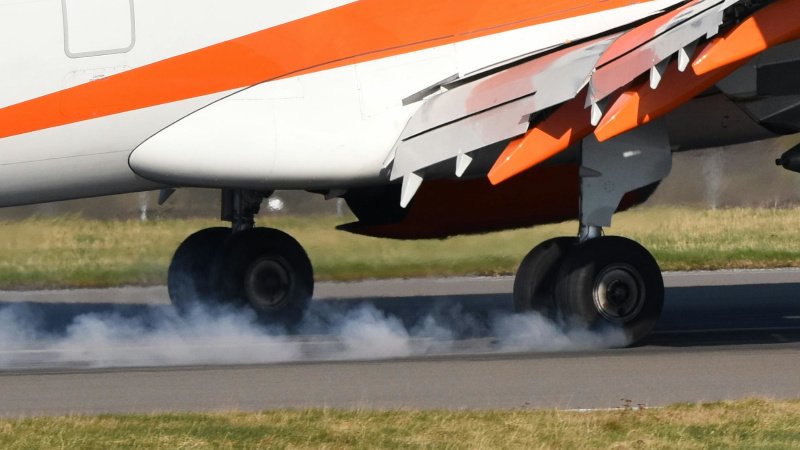
Radial-Ply Aircraft Tire Construction
Radial-Ply Aircraft Tire Construction: Engineering Principles and Advantages
Modern aircraft increasingly employ radial-ply tire construction for its superior heat management, tread life, and consistent handling. In a radial tire, the carcass plies—the layers of cord fabric forming the body—are arranged perpendicular to the tread, running directly from bead to bead at approximately 90 degrees to the centerline. This contrasts with bias-ply construction, where cords cross each other diagonally. Above the carcass, one or more belt plies of high-strength materials such as steel, aramid, or nylon run circumferentially around the tire, reinforcing the tread region. This architecture separates tread stiffness from sidewall flexibility, providing significant performance advantages.
Radial-Ply Aircraft Tire Construction: Engineering Principles and Advantages
A radial aircraft tire shares many components with its bias-ply counterpart, but their orientation and function differ. From the inside outward, a butyl or halobutyl innerliner seals in inflation pressure. The carcass plies, typically made from nylon 6,6 or aramid cords, extend radially from bead to bead. Around the bead area, layers such as the flipper, chafer, and bead apex strengthen the interface between tire and rim, managing stress and preventing slippage during heavy braking or high-energy landings. Above the carcass, belt or breaker plies add circumferential rigidity, stabilizing the tread footprint and controlling growth at high speeds. Finally, the tread compound resists wear and heat, while the sidewall compound is formulated for flexibility and ozone resistance.
Mechanical Behavior and Performance
The radial design fundamentally alters how the tire flexes and dissipates energy. Because the tread and sidewall are structurally independent, the sidewall flexes more freely, reducing heat buildup and improving ride quality. NASA’s Mechanical Properties of Modern Radial Aircraft Tires report (2003) showed that radial tires maintain a consistent footprint and contact pressure across a wide load range. Rolling resistance is lower, and the vertical stiffness-to-damping ratio allows for smoother dynamic response during taxi, landing, and braking. Empirical data also show that the effective rolling radius of a radial tire changes less with deflection than that of a bias tire, improving landing-gear stability and braking predictability.
Thermally, radial tires run significantly cooler at equivalent loads and speeds because their independent belt layer absorbs much of the shear energy that would otherwise be distributed through multiple crisscross plies. This makes them particularly well suited to high-speed and high-energy aircraft operations. Reduced hysteresis also leads to longer tread life, often extending service intervals by 25–40% compared with bias designs.
Design and Engineering Considerations
Engineering a radial aircraft tire involves careful optimization of cord angles, belt tension, and compound selection. The belt package must be tuned to resist radial growth without causing circumferential cracking. Bead design is critical: the bead apex hardness and flipper geometry determine how stresses are transmitted into the wheel rim. Because radial sidewalls are more flexible, landing-gear dynamics—especially shimmy and deflection modes—require recalibration when converting from bias to radial tires. NASA and SAE datasets are often used to simulate this behavior in gear modeling.
Maintenance and Lifecycle
Maintenance practices for radial tires generally mirror those for bias tires, as described in FAA Advisory Circular 20-97B and SAE standards AS4833 and ARP4834, covering inspection and retreading. Radials, however, exhibit less tread shoulder wear and more uniform heat distribution, allowing for more predictable retread cycles. Operators must still remove tires worn to the outermost casing ply or exposed belt package.
Operational Advantages
Compared with bias-ply designs, radial aircraft tires offer:
– Lower rolling resistance and cooler operation
– Higher tread life and mileage
– Reduced weight for equivalent load capacity
– Improved footprint stability and braking control
While radials require more complex manufacturing and sometimes cost more initially, their durability and efficiency deliver lower lifetime operating costs. For high-performance, long-range, or high-cycle aircraft, the radial-ply tire represents the modern engineering solution—balancing strength, thermal control, and precision handling in every takeoff and landing.
